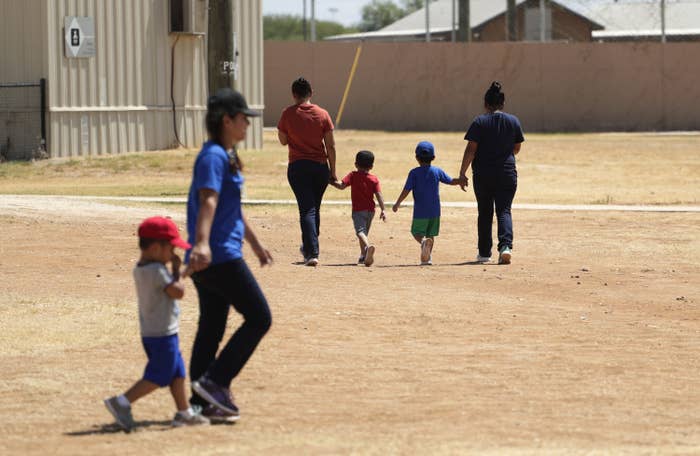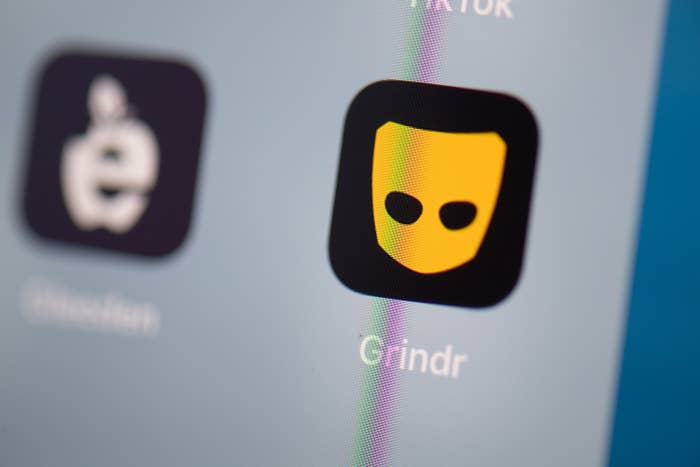‘Mythbusters’ star Grant Imahara dies from brain aneurysm

LOS ANGELES (AP) — Grant Imahara, the longtime host of Discovery Channel’s “Mythbusters,” died from a brain aneurysm, the network said Tuesday.
Imahara died Monday at the age of 49.
“We are heartbroken to hear this sad news about Grant,” the network said in a statement. “He was an important part of our Discovery family and a really wonderful man. Our thoughts and prayers go out to his family.”
Along with his “MythBusters” fame, Imahara was known for starring on Netflix’s “White Rabbit Project.” He became popular in Hollywood for his talents in electronics and recently showcased his creation of a fully animatronic Baby Yoda.
Discovery said on its website that Imahara dedicated his life to using his skills to make people smile. The network said he was one of the few trained operators for the famed R2-D2 droid from the Star Wars franchise and engineered the Energizer Bunny’s popular rhythmic beat.
Former “MythBusters” co-host Adam Savage delivered a heartfelt message about Imahara on social media.
“I’m at a loss. No words,” Savage on Twitter. “I’ve been part of two big families with Grant Imahara over the last 22 years. Grant was a truly brilliant engineer, artist and performer, but also just such a generous, easygoing, and gentle PERSON. Working with Grant was so much fun. I’ll miss my friend.”
Kari Byron and Tory Belleci were co-hosts with Imahara on “Mythbusters” and “White Rabbit Project.” Both said they are heartbroken and stunned by the recent death of their colleague and friend.
“Heartbroken and in shock tonight. We were just talking on the phone. This isn’t real,” said Bryon on Twitter. She posted a series of photos of Imahara and said the two just had a phone conversation.
“I just cannot believe it,” Belleci said. “I don’t even know what to say. My heart is broken. Goodbye buddy.”
"Mythbusters" Host And Electrical Engineer Grant Imahara Is Dead At 49
The electrical engineer and reality show host died suddenly on Monday.
Ellie HallBuzzFeed News Reporter
Posted on July 14, 2020,
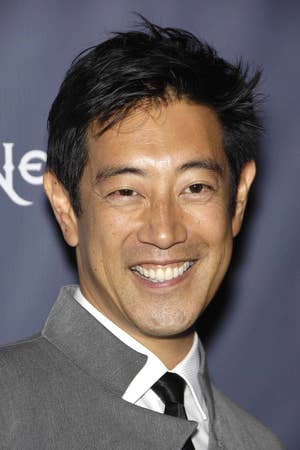

Gotpap / gotpap/STAR MAX/IPx, Discovery Channel / Via go.discovery.com
Electrical engineer and host of the science shows Mythbusters and White Rabbit Project Grant Imahara is dead at 49, the Discovery Channel said Monday.
"We are heartbroken to hear this sad news about Grant," the network said in a statement. "He was an important part of our Discovery family and a really wonderful man. Our thoughts and prayers go out to his family."
The host's cause of death has not been publicly revealed, but according to the Hollywood Reporter, he "died suddenly following a brain aneurysm."
Imahara began his career as an electrical engineer at Lucasfilm THX in 1993. In 1996, he moved to Lucasfilm's Industrial Light and Magic division. In his eight years at ILM, Imahara rose to the position of lead modelmaker, specializing in robotics and electronic and radio control. He was a chief architect of the technology behind the robot R2-D2 during the development of the Star Wars prequel films and one of only three people in the United States authorized to operate the robots used for filming.

Grant Imahara@grantimahara
This #fbf in honor of #StarWarsRogueOne: my career with @starwars, working on R2-D2 and Episodes 1-3.08:18 PM - 16 Dec 2016
Reply Retweet Favorite
Imahara joined Mythbusters, a popular reality television show where the hosts used science to disprove urban legends, in its third season in 2005. As a member of the show's "Build Team," he used his expertise in engineering and robotics debunk myths for nine years, appearing in more than 200 episodes.
In 2016, Imahara and two of his Mythbusters cohosts, Kari Byron and Tory Belleci, starred in a Netflix show with a similar premise, called White Rabbit Project.
His colleagues and friends expressed shock and disbelief on social media in the wake of the news.

Tory Belleci@ToryBelleci
I just cannot believe it. I don’t even know what to say. My heart is broken. Goodbye buddy @grantimahara05:14 AM - 14 Jul 2020
Reply Retweet Favorite

Kari Byron@KariByron
Somedays I wish I had a time machine. @ToryBelleci @grantimahara11:32 PM - 13 Jul 2020
Reply Retweet Favorite
Adam Savage, who worked with Imahara at Lucasfilm and the Discovery Channel, said he had "no words" after learning the news.

Adam Savage@donttrythis
I’m at a loss. No words. I’ve been part of two big families with Grant Imahara over the last 22 years. Grant was a truly brilliant engineer, artist and performer, but also just such a generous, easygoing, and gentle PERSON. Working with Grant was so much fun. I’ll miss my friend.03:52 AM - 14 Jul 2020
Reply Retweet Favorite
On Reddit, thousands of Imahara's fans paid tribute to his legacy, with many people commenting that watching him on Mythbusters inspired them to pursue careers in science.
"The engineering community has lost a big light today," wrote one commenter.
"[Mythbusters] would not have been anywhere near the success it was without him, and for me he embodies everything about both the show's ethos and what a true engineer should represent."
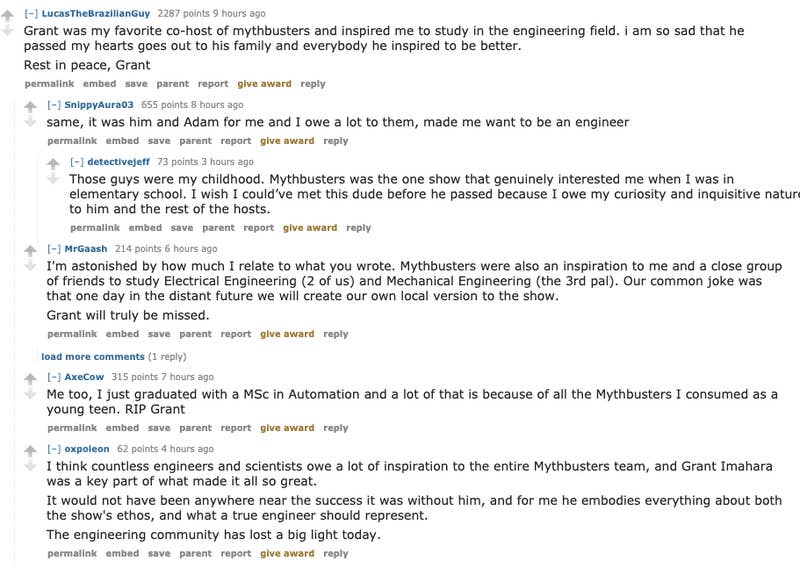
Reddit / Via reddit.com
Ellie Hall is a reporter for BuzzFeed News and is based in Washington, DC.
R.I.P. Grant Imahara from MythBusters
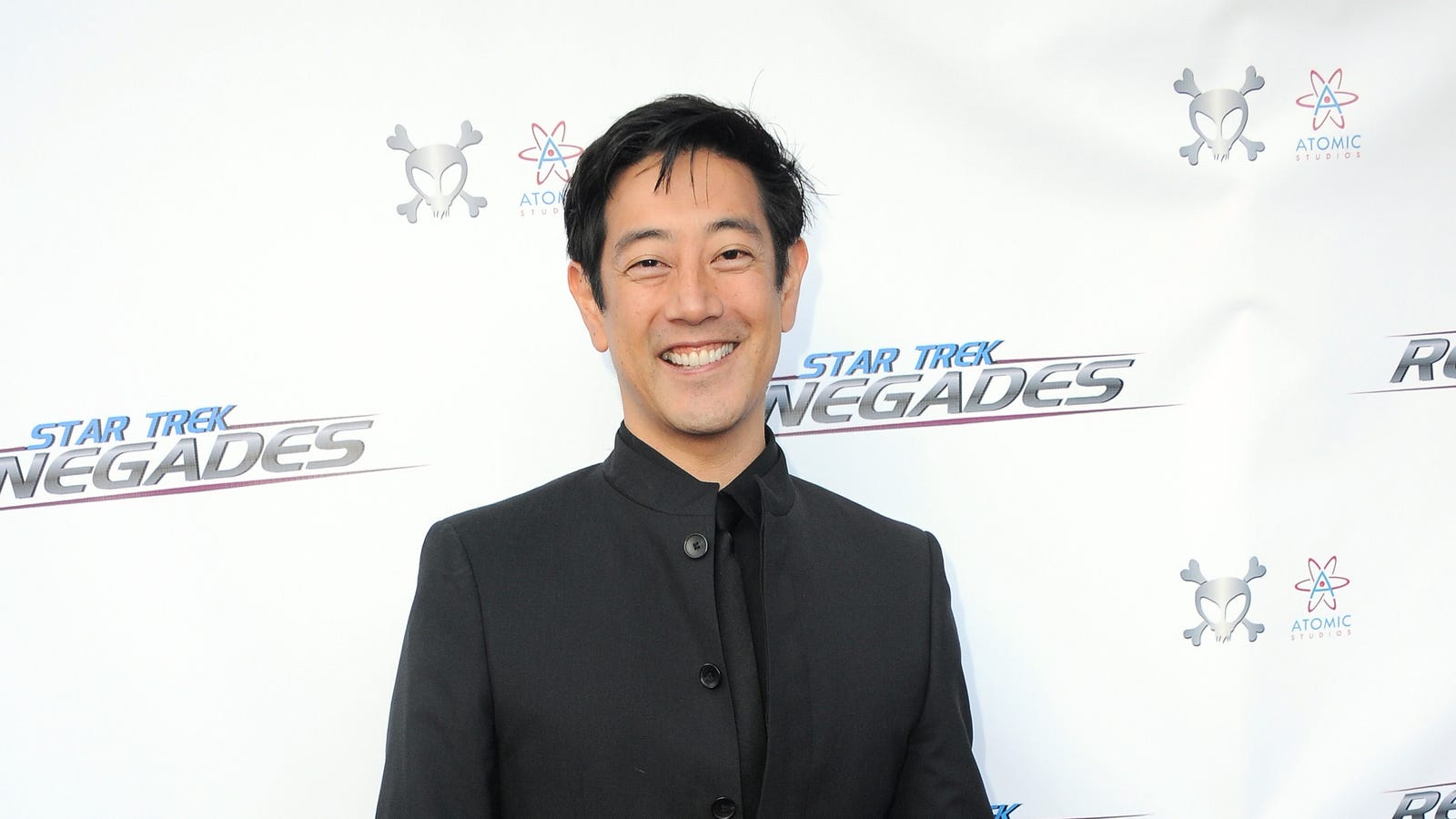
As reported by The Hollywood Reporter, former MythBusters host Grant Imahara has died. The news was confirmed by a statement from a Discovery representative, referring to Imahara as an “important part of our Discovery family and a really wonderful man.” A cause of death was not given, but THR’s sources say he died suddenly from a brain aneurysm. Imahara was 49.
Grant Imahara was born in 1970 and studied electrical engineering and robotics at the University Of Southern California, which he managed to turn into a visual effects career by landing a job with Lucasfilm after college. He worked with the THX and Industrial Light And Magic, working on effects for major movies like the Star Wars prequels (where he somewhat famously updated and operated the R2-D2 robots used in filming), the Matrix sequels, and cult classic Star Trek homage Galaxy Quest. He was also a competitor on BattleBots, helped design the modern Energizer Bunny, and built Craig Ferguson’s robot sidekick Geoff for The Late Late Show.
It was through ILM that Imahara met Jamie Hyneman and Adam Savage, who invited Imahara to join them on the MythBusters team in the show’s third season. Along with co-hosts Kari Byron and Tory Belleci, Imahara was part of the “Build Team” and constructed machines and robots to test myths and—in a nod to his other career—recreate stunts and effects from movies and TV to see how viable or realistic they were. The playful banter and bickering between Hyneman and Savage was the highlight of the MythBusters segments they hosted, but Imahara, Byron, and Belleci brought an infectious enthusiasm and passion to everything they touched on the show. The three of them left MythBusters in 2014, shortly before the show itself came to an end. In 2016, Imahara reunited with Byron and Belleci for the one-season White Rabbit Project on Netflix.
On Twitter, Savage said that Imahara was a “truly brilliant engineer, artist, and performer, but also just such a generous, easygoing, and gentle person.” Earlier today, possibly coincidentally, Kari Byron posted a photo of herself with Imahara and Belleci along with the caption “somedays I wish I had a time machine.” She has since shared several other photos of Imahara from the MythBusters days.
